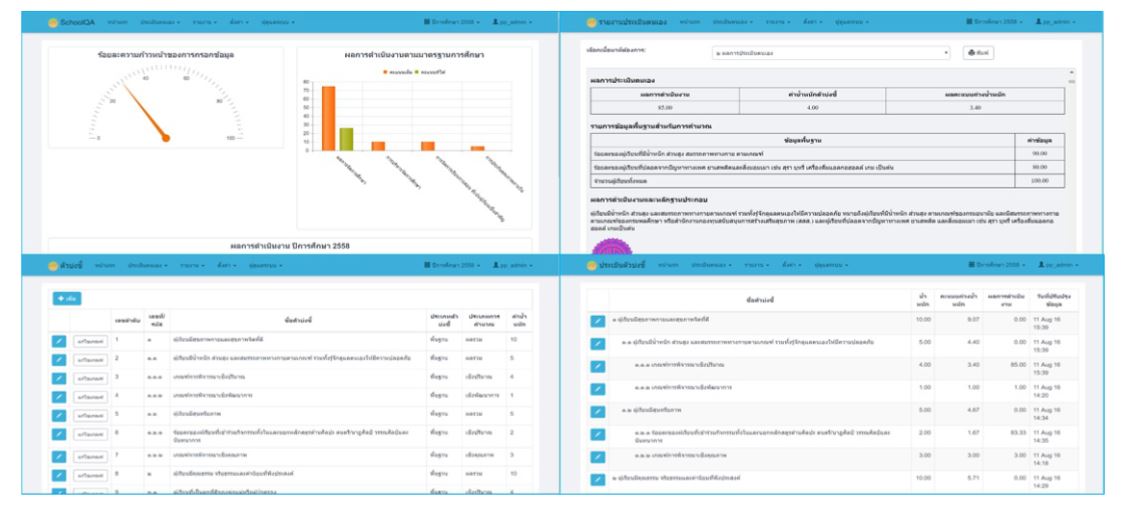The improvement of a quality assurance information systems Based Six-Sigma Principles
Main Article Content
Abstract
This paper presents the development of a quality assurance information system based on Six-Sigma principles for schools in northern Thailand. The aim of this research is to solve problems that occurred in a previous system. These included an awkward user interface, support without quality standards, user confusion in the workflow, along with inaccurate and unreliable information system processes. Six-Sigma uses five processes. These are the define, measure, analyze, improvement, and control phases (DMAIC). According to previous studies, measurement of user satisfaction and expectations has three components: standards-based service, system reliability, and processing speed. Technical and non-technical quality measurements indicated that the initial system operated at a 2-sigma level. These measurements confirm that the proposed system provides the improved services over the initial system and that it effectively solved many of its problems. Moreover, it raised the efficiency of the service system based on quality assurance standards for the mission of the schools in the northern region.
Article Details
References
Office of the National Education Commission. (2002). National Education Act B.E. 2542 (1999) Ministerial Regulations Rules Governing the System of Quality Assurance Methods. (2553, April 23). Government Gazette.
N. Warren, M. T. Neto, J. Campbell and S. Misner. Business Intelligence in Microsoft Share-Point 2010. California : O’Reilly Media, Inc., 2011.
Business Process Management Initiative, Business Process Modeling Notation (BPMN) Version 1.2 (Online). Available From:https://www.omg.org/spec/BPMN/1.2/(2004, January 3).
O.H. Booch, J. Rumbaugh and I. Jaboson. The Unified Modeling Language User Guide. Reading, MA: Addison Wesley, 1999.
M. Harry and R. Schroeder. Six Sigma: The Breakthrough Management Strategy Revolutionizing the World’s Top Corporations.USA:Random House, Inc., 2005.
K.Srinivasana, S.Muthub, N.K.Prasadc and G.Satheeshd. Reduction of paint line defects in shock absorber through Six Sigma DMAIC phases. Procedia Engineering 97 (2014) 1755 - 1764 (Online). Available From: https://www.sciencedirect.com
Alexandra Teneraa,b , Luis Carneiro Pinto. A Lean Six Sigma (LSS) project management improvement model. Procedia - Social and Behavioral Sciences 119 ( 2014 ) 912 - 920 (Online). Available From: https://www.sciencedirect.com
Siyu Chena,b, Shuhai Fan a,b, Jiawei Xionga,b,Wenqian Zhanga. The Design of JMP/SAP Based Six Sigma Management System and its Application in SMED. Procedia Engineering 174 ( 2017 ) 416 - 424 (Online). Available From: https://www.sciencedirect.com
Sittisak Prukpitikul. (2003). Quality jump with Six Sigma. Bangkok: Technology Promotion Association Thailand-Japan.
Boonchom Srisa-ard. (2002). Preliminary Research Revised Edition. Bangkok:Wattana Panich.
Kitisak Ploypanichcharoen. (2005). Statistical Problem Solving (SPS). Bangkok: Technology Promotion Association Thailand-Japan.
Kitisak Ploypanichcharoen. (2001). Process Capability Analysis. Bangkok: Technology Promotion Association Thailand-Japan.
F. Voehl, H. J. Harrington, C. Mignosa and R. Charron. The Lean Six Sigma Black Belt Handbook: Tools and Methods for Process Acceleration. NW:Taylor & Francis Group, 2014.
Kitti Pakdeewattanakul, Panida Panichkul. (2003). System Analysis and Design. Bangkok: KTP Comp & Consult.


